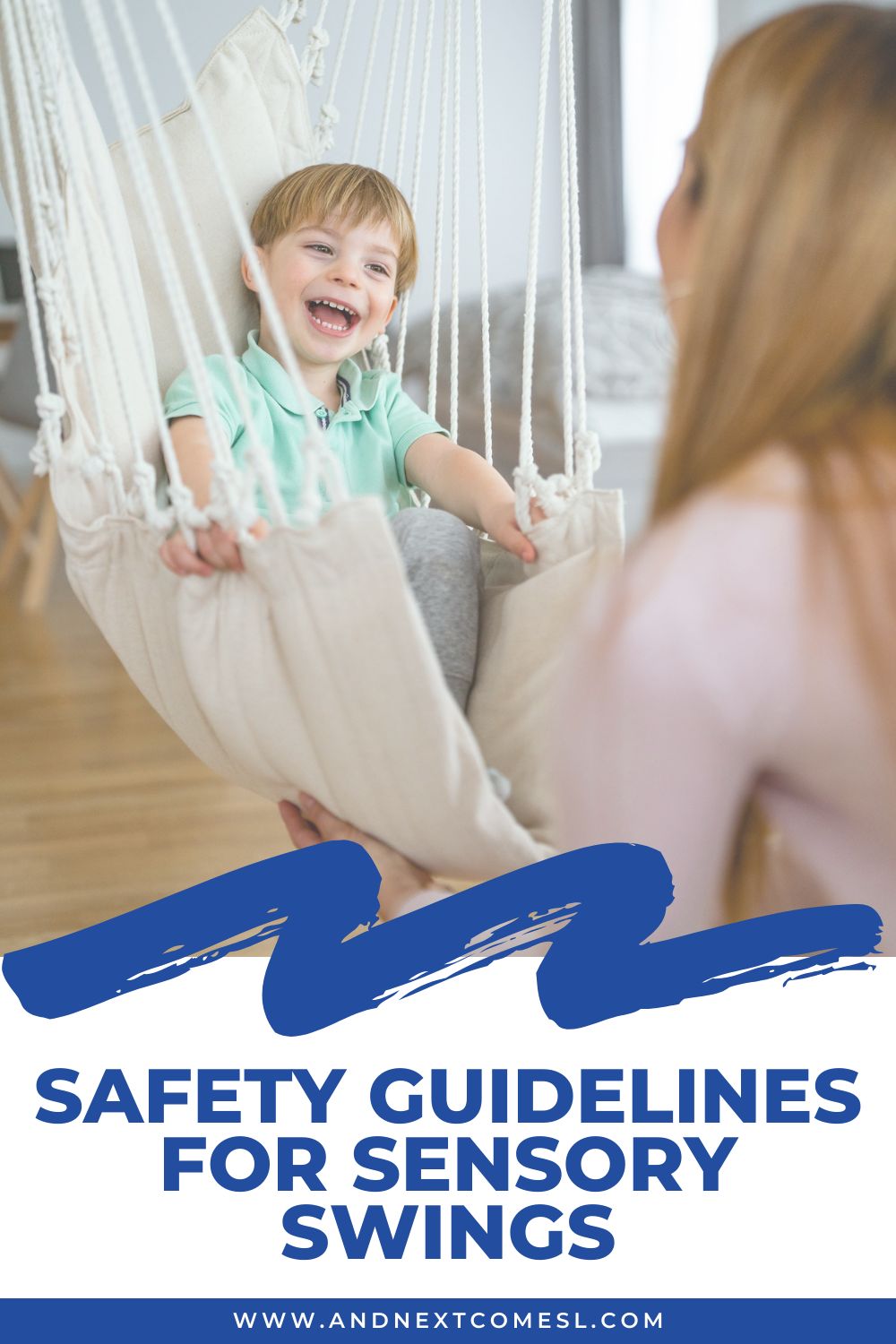Swings can be a great way to support a child's sensory needs and help them regulate.
That's why you'll often find swings set up in sensory rooms and why swinging is a common activity to use as part of a sensory diet. After all, there are lots of benefits of swinging for kids.
However, there are some important safety guidelines for sensory swings that you should keep in mind as a way to reduce the risk of injury. Regardless of what type of swing you are installing or where you are installing it, you should follow these guidelines.
Important Safety Guidelines for Sensory Swings
To reduce the risk of injury when using sensory swings, there are a few safety recommendations to keep in mind.
1. Proper Installation & Anchoring
First things first, you want to make sure that the swing is installed properly. That includes making sure that the swing's hardware is installed correctly and is securely fastened to the ceiling (i.e., it should be installed into a support beam or ceiling joist) or door frame. That also means following manufacturer guidelines and installation instructions.
You also want to ensure that the hardware can handle the full weight of the swing AND the weight of the child who will be using the swing. Be sure to double check the weight limits for the swing, the swing holds, and the carabiners or fasteners used to attach the swing to the holds.
It's also important to make sure you install the swing with enough clearance for use. Remove any furniture or obstacles that could cause injury while swinging.
Finally, make sure the swing is fully attached and connected to the swing holds. I always like to give the swing a gentle tug down to make sure it's fully attached and not going to slip off. Then I always sit in the swing myself to ensure it can hold me up and is securely attached (thankfully, I fit in the weight limits in order to do this).
2. Regular Maintenance & Inspection
Before using a sensory swing, it's important to first check over all components, hardware, ropes, and swings for wear and tear. Look for any rips or tears in the fabric or ropes. Make sure the carabiner clips aren't damaged. And double check that the swing hooks, including any eye bolts, on the ceiling or door frame aren't loose.
3. Set Up a Safe Space
I mentioned that it's important to ensure that you install the swing with enough clearance for use. But there are some additional safety factors to consider when actively using the swing.
For instance, you might want to consider setting up floor mats beneath the swinging space or reminding other children in the play space not to run in front or behind the person swinging.
If your swing is installed in a doorway, you might want to install foam padding or use pool noodles on the door frame to reduce the risk of bumping into the frame while swinging.
The point is to evaluate your space, make sure it is clear of obstacles, and use safety equipment to reduce the risk of injury.
4. Use Proper Supervision
It's important to supervise the child while they are using a sensory swing. That includes:
- Staying within arm's reach
- Never leaving a child unattended
- Monitoring the child for any signs of discomfort or overstimulation
- Adjusting the swing for individual needs (e.g., motion, intensity, height)
- Being aware of surroundings
- Following manufacturer guidelines and using the swing as intended
- Helping the child get in and out of the swing safely
- Using built-in safety equipment, such as harnesses or straps, if included
- Practicing safe swinging behaviors
- Put swings away when not in use
Basically, use common sense, follow manufacturer guidelines, and keep an eye on the child at all times.
5. Consider the Child's Individual Needs
When using a sensory swing, it's important to consider the child's sensory needs, their age, their abilities, and their size, among other things. That might include:
- Limiting use to prevent overstimulation
- Consulting with professionals, especially in regards to the child's sensory needs
- Using a swing that fits the child's ability level
- Using a swing that's the right size for the child
- Tailoring the speed, motion, height, and intensity of the swinging
- Picking a swing that meets the needs and preferences of the child (e.g., avoiding anything too cocoon-like if they are claustrophobic or dislike deep pressure)
- Determining whether or not to include additional activities while swinging
Remember, the experience of using a sensory swing should be tailored to the individual. For example, if they don't like spinning, then don't spin them in the swing.
A Quick Recap on Keeping Kids Safe While Using a Sensory Swing
When it comes to using sensory swings with kids, it's important to follow these safety recommendations:
- Properly install the swing
- Perform regular maintenance and inspection of all swings, hardware, ropes, and other components
- Set up a safe space, make sure the area is clear of obstacles, and use safety equipment
- Use proper supervision and follow manufacturer guidelines
- Consider the child's individual needs
To reduce the risk of injury and to maximize the benefits of swinging, be sure to follow these safety guidelines for sensory swings.







